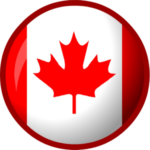On Canada’s flag
We came that close to putting a beaver on the flag, people (pinches fingers together).
Choosing Canada’s Flag – The Archivist – Publications – Library and Archives Canada
On December 15, 1964, after a prolonged and bitter debate lasting thirty-three days, the House of Commons passed an act providing a national flag for Canada. The design chosen was based on the flag of the Royal Military College in Kingston.
Although debate over a distinctive Canadian flag lasted for nearly a century, there was renewed controversy during the election campaign of 1963, when Liberal leader Lester B. Pearson promised that Canada would have a flag of her own within two years. Once in power, Prime Minister Pearson promoted a design by an Ottawa heraldic expert, Alan Beddoe. This design, with three maple leaves on a white field and a vertical blue bar on each end, soon became known as “Pearson’s Pennant.”
By contrast, the Leader of the Opposition, John Diefenbaker, favoured the Red Ensign, the flag of the British merchant marine, which had flown on Canadian vessels since 1892. Furthermore, in 1945, it had officially replaced the Union Jack as Canada’s flag on land until such time as the Canadian Parliament chose a new one.

 Previous Post
Previous Post Next Post
Next Post